Related Research Articles
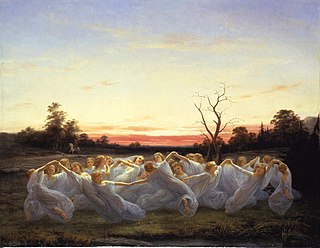
An elf is a type of humanoid supernatural being in Germanic folklore. Elves appear especially in North Germanic mythology, being mentioned in the Icelandic Poetic Edda and Snorri Sturluson's Prose Edda.

A troll is a being in Nordic folklore, including Norse mythology. In Old Norse sources, beings described as trolls dwell in isolated areas of rocks, mountains, or caves, live together in small family units, and are rarely helpful to human beings.

A dwarf is a type of supernatural being in Germanic folklore. Accounts of dwarfs vary significantly throughout history; however, they are commonly, but not exclusively, presented as living in mountains or stones and being skilled craftspeople. In early literary sources, only males are explicitly referred to as dwarfs. However, they are described as having sisters and daughters, while male and female dwarfs feature in later saga literature and folklore. Dwarfs are sometimes described as short; however, scholars have noted that this is neither explicit nor relevant to their roles in the earliest sources.
In the fantasy of J. R. R. Tolkien, the Dwarves are a race inhabiting Middle-earth, the central continent of Arda in an imagined mythological past. They are based on the dwarfs of Germanic myths who were small humanoids that lived in mountains, practising mining, metallurgy, blacksmithing and jewellery. Tolkien described them as tough, warlike, and lovers of stone and craftsmanship.
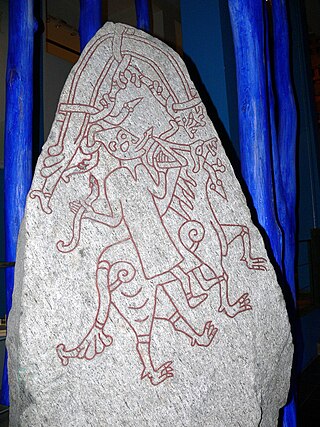
A jötunn is a type of supernatural being in Germanic mythology. In Norse mythology, they are often contrasted with gods and other non-human figures, such as dwarfs and elves, although the groupings are not always mutually exclusive. The entities included in jötunn are referred to by several other terms, including risi, þurs and troll if male and gýgr or tröllkona if female. The jötnar typically dwell across boundaries from the gods and humans in lands such as Jötunheimr.

A leprechaun is a diminutive supernatural being in Irish folklore, classed by some as a type of solitary fairy. They are usually depicted as little bearded men, wearing a coat and hat, who partake in mischief. In later times, they have been depicted as shoe-makers who have a hidden pot of gold at the end of the rainbow.
A trow is a malignant or mischievous fairy or spirit in the folkloric traditions of the Orkney and Shetland islands. Trows may be regarded as monstrous giants at times, or quite the opposite, short-statured fairies dressed in grey.
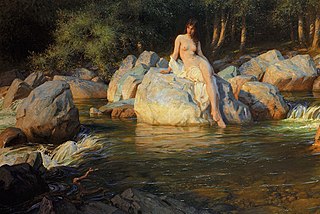
A kelpie, or water kelpie, is a shape-shifting spirit inhabiting lochs in Irish and Scottish folklore. It is usually described as a grey or white horse-like creature, able to adopt human form. Some accounts state that the kelpie retains its hooves when appearing as a human, leading to its association with the Christian idea of Satan as alluded to by Robert Burns in his 1786 poem "Address to the Devil".
David MacRitchie was a Scottish folklorist and antiquarian. He proposed that stories of fairies originated with an aboriginal race that occupied the British Isles before Celts and other groups arrived.

English folklore consists of the myths and legends of England, including the English region's mythical creatures, traditional recipes, urban legends, proverbs, superstitions, and folktales. Its cultural history is rooted in Celtic, Christian, Nordic and Germanic folklore.
A bodach is a trickster or bogeyman figure in Gaelic folklore and mythology. The bodach "old man" is paired with the cailleach "hag, old woman" in Irish legend.
A bogle, boggle, or bogill is a Northumbrian and Scots term for a ghost or folkloric being, used for a variety of related folkloric creatures including Shellycoats, Barghests, Brags, the Hedley Kow and even giants such as those associated with Cobb's Causeway. They are reputed to live for the simple purpose of perplexing mankind, rather than seriously harming or serving them.
The Simonside Hills are a hill range in Northumberland, England near the town of Rothbury. Most of the hills are around 300–400 metres (980–1,310 ft) high and are popular spots for hikers in the area. The highest point is Tosson Hill at 440 metres (1,444 ft).
Duergar may refer to:

A hag is a wizened old woman, or a kind of fairy or goddess having the appearance of such a woman, often found in folklore and children's tales such as "Hansel and Gretel". Hags are often seen as malevolent, but may also be one of the chosen forms of shapeshifting deities, such as The Morrígan or Badb, who are seen as neither wholly benevolent nor malevolent.
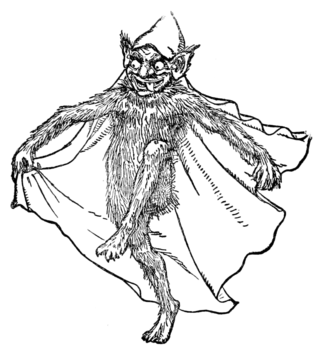
A goblin is a small, grotesque, monstrous creature that appears in the folklore of multiple European cultures. First attested in stories from the Middle Ages, they are ascribed conflicting abilities, temperaments, and appearances depending on the story and country of origin, ranging from mischievous household spirits to malicious, bestial thieves. They often have magical abilities similar to a fairy or demon, such as the ability to shapeshift.
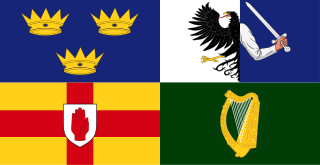
A fetch is a supernatural double or an apparition of a living person. The sighting of a fetch is regarded as an omen, usually for impending death.
Nicneven,Nicnevin or Nicnevan is a witch or fairy queen from Scottish folklore. She is often said to be the same figure as the Gyre-Carling or Hecate, but some scholars disagree with this. It is debated whether the name originally referred to a real woman or a mythical goddess.

The stoor worm, or Mester Stoor Worm, was a gigantic evil sea serpent of Orcadian folklore, capable of contaminating plants and destroying animals and humans with its putrid breath. It is probably an Orkney variant of the Norse Jörmungandr, also known as the Midgard Serpent, or world serpent, and has been described as a sea dragon.
In the folklore on the Anglo-Scottish border, the Brown Man of the Muirs is a dwarf who serves as a guardian spirit of wild animals. Also is a Folklore story, called "Brown Man of the Moor" in the Richardson's Table Book in the 19 century according to Publications of the Folklore Society of North England, where appear the creatures: boggleboes, bogies, redmen, portunes, grants, hobbits, hobgoblins and brown men.
References
- 1 2 Ghosts of The North Country, Henry Tegner, 1991 Butler Publishing ISBN 0-946928-40-1, page 62
- 1 2 Familiar letters of Sir Walter Scott, Volume 1, Sir Walter Scott, Houghton Mifflin, 1894, page 151
- 1 2 Concise Scots dictionary Mairi Robinson, Edinburgh University Press, 1999, ISBN 1-902930-01-0, ISBN 978-1-902930-01-5 pages 162-166
- 1 2 "Dwarf Definition & Meaning".
- ↑ Online Etymology Dictionary
- Atkinson, Philip. Folk Tales of North East England.
- Grice, F, Folk Tales of the North Country (Thomas Nelson & Sons Ltd, London & Edinburgh, 1944) pp130–133
- Simonside Folklore